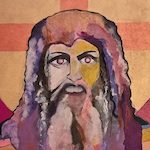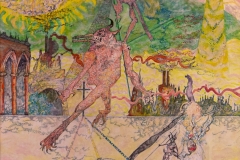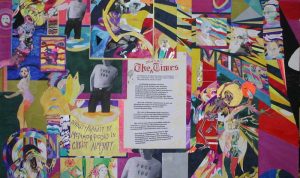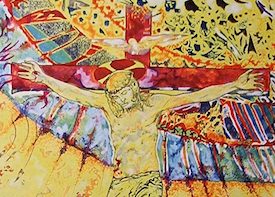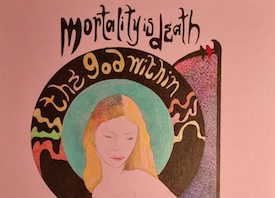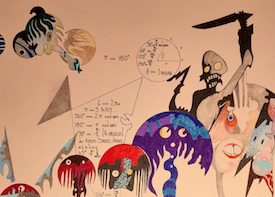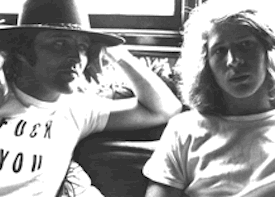I can’t imagine anyone meeting Jim Overbeck for the first time and thinking they know someone like him. It is evident to anyone of even the meanest intelligence that they are in the presence of an extraordinary being.
The word genius commonly describes individuals of outstanding ability, and Jim meets this criterion. Still, more than this, he has a breadth of knowledge and a life experience of such intensity that a simple attribution of genius to him is insufficient.
Jim Overbeck’s Early Life
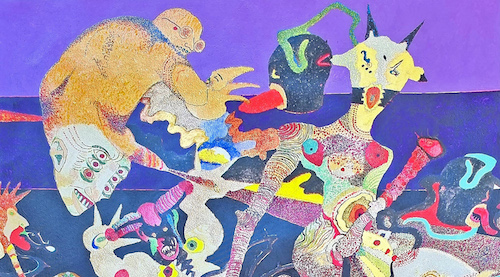
Jim Overbeck’s paternal line is unknown. Late in life, he discovered that the man he thought was his father was only a stepfather. He was the result of a secret relationship during the war while his stepfather was in North Africa at El Alamein. A cousin researched the maternal side of his family and found that his grandfather had aristocratic connections and was known as a provider of beautiful women for wealthy visitors to a nearby stately hall.
Jim’s mother spoke of the ‘shooting parties’ and the highfliers who were there with rumours of connections to royalty. It is certainly feasible that Jim’s father may have been amongst the guests at the hall. His mother took the secret of his father’s identity to the grave, so it is intriguing that such a brilliant boy came from such a mysterious union.
From Beeston, Nottingham
Jim Overbeck was born in Beeston, Nottingham, in 1943. His stepfather was absent for the first years of his life, returning when the war had ended. One of his earliest memories was seeing his mum with her head and shoulders in a gas oven, attempting to kill them when he was no more than a toddler. His early life was punctuated with trips to aunts’ houses when his mum was profoundly ill from mental/emotional illness and needed to go to hospital. When he returned from the war, his stepfather showed him virtually no affection or kindness.
The stepfather, possibly due to traumas suffered in the war, had become violent and unstable and horrible scenes of rage and violence, specifically against his mother, were a common event. Although Jim told me that some parts of his childhood were ‘golden’, it seems that from a young age, he was exposed to outrageous violence and mental illness and had to cope with problems no child should be exposed to.
To The Slums of Radford
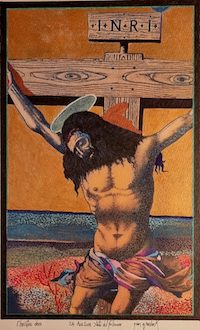
Coupled with the emotional turmoil in the home were problems of poverty. Beeston, although not a wealthy area then, was considered a nice place to live. However, through mismanagement of the finances, his family ended up in Radford, an infamous slum area of Nottingham made famous in Alan Sillitoe’s ‘Saturday Night and Sunday Morning’ (Alan lived four or five doors away). There were false dawns when things seemed to be getting better when the family moved to a better area, but the house they were buying was taken away from them and his ‘stepfather’ was even imprisoned for debt.
His ‘school friends’ rubbed salt into his wounds with mockery and vicious remarks – news of visits by bailiffs, debt collectors and police added shame to his life. His stepfather was an obsessive borrower who avoided repayment wherever possible, and every shop and business in a 5-mile radius was owed money. Sights like goods being reclaimed from the house or there being nothing whatever for Christmas have understandably left their scar on Jim.
These were the days when beatings were handed out to schoolchildren as a matter of course, and through all the dreadful days of his parent’s appalling troubles, I never heard mention of help from outside. Ultimately, the burden of coping with the violence and madness in his home fell squarely on his shoulders.
Jim had given up on God and religion at age 14/15 when he saw his family torn apart.
A Cruel Twist
His great crisis came when his ‘father’ was to be jailed for debt. The family had moved out of Radford for a while and were living in a better area called Kimberley, but Overbeck’s stepfather had got deeply into debt and was about to go to prison. Jim went alone to the local church at night and prayed passionately that his family be spared this humiliation.
The following day, a letter from the court seemed to answer his prayers, as it had been decided that he was to have more time to pay and that it wasn’t to be taken. However, in a cruel twist, a day or so later, bailiffs arrived at the house and took him away; the same day, the family faced eviction and went back to the worst slum part of Radford, known locally as Sodom.
Overbeck returned to the church that night and, with all his passion and fury, cursed God. This denial of God shaped his intellectual development for many years and sent him towards the cleverest thinkers that atheism had to offer.
Jim Overbeck Joins the Army
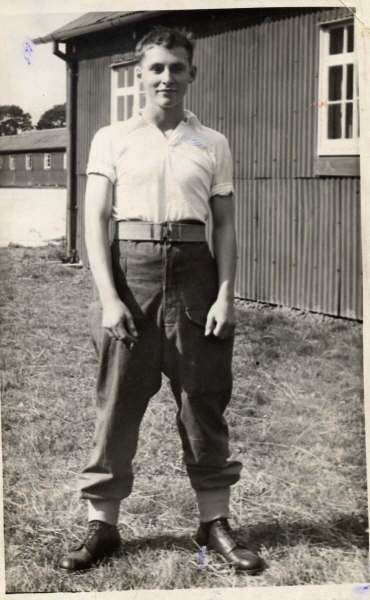
Jim Overbeck joined the army at age sixteen. During his stay in the army, Overbeck spent many hours in the library reading as much as possible. In 1959, Military Intelligence officers in the HM Armed Forces ran intelligence tests surreptitiously. They set various puzzles that gave cash prizes to the winner. The young Overbeck won every prize, no matter how complex or arcane the puzzle. So it was that at 16, as a boy soldier, he was likened to WJ Sidis, the American mathematical prodigy with an IQ of 250-300.
The officers who discovered his abilities advised him to get out of the Army & swore him to secrecy regarding their meeting, which he maintained for decades. From leaving the army as a boy soldier aged 17, his intellectual odyssey began. He attended three universities and won a scholarship in the Foundations of Mathematics, receiving ten professorial testimonials. Jim created a form of Mathematics called Non-Cantorian set theory & has written perhaps the largest illustrated book since Leonardo! The book investigates the Trinity and the infinite in mathematics, theology & philosophy.
Jim’s Visionary Writing and Art
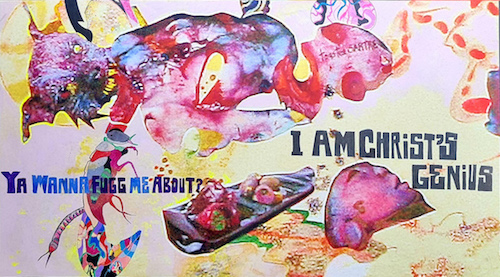
His work is transformational, and he is an avatar of theosis. The events of his life are interwoven into his creative output to form a powerful communication of living energy to anyone who encounters it. He has expressed himself through word and image. His opus: ‘The Autobiography of God Almighty’, the book in which God speaks, was published in 2003. Since then, Jim has written extensively and participated in numerous online debates.
He has attracted many enemies, particularly among the strident and proselytising atheists. Unfortunately, they have tried every form of attack on his ideas, including defaming and vilifying him. However, he remains undaunted and has never bested in verbal combat, including many outrageously funny ripostes.
Art of the Thunderbolt – Jim’s Galleria
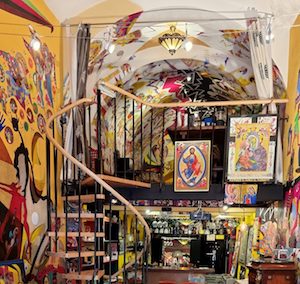
Under the Art of the Thunderbolt banner, Jim Overbeck produces images through which the immortal Light shines for those with eyes made pure enough to see. The gallery on the Riviera del Fiori in the picturesque town of Dolcedo has become a powerful work of art. The walls are alive with murals depicting the spiritual realms and the war between God & Satan.
The painting of hell is worthy of the great Hieronymus Bosch and pays tribute to the master whilst being a visual representation of Overbeck’s unique and compelling interior world. The book and the art are a devastating attack on atheism.
Anyone attempting to marginalise or deny God will be faced by the mirror of their soul expressed in the writing and art of ‘the Genius of theosis’.
Jim’s latest video
Why Theosis is Genius
In this video, Jim discusses the following: Transfiguration and metamorphosis, God’s gift of the crown of thorns, Leibniz and the reductio ad absurdum as it relates to the infinite, the goal of philosophy, Trinity and Super-Trinity, the role of art in visionary states and the visibility of God.
Latest Gallery Items
Jim’s latest post
- Jim Overbeck and MathematicsThe cult of logical empiricism, with its demand for facts, evidence and proof fails to recognize abstract identity ‘A = A’ is first constituted by ‘A’ not equal to itself – i.e. – ‘A’ is incomplete because every ‘A’ is new, unique and transient [Heraclitus preceded Aristotle & becoming precedes substantiation]. Heraclitus’s Logos originates becoming … Read more
Download
The Autobiography of God Almighty Vol1
Related Articles
